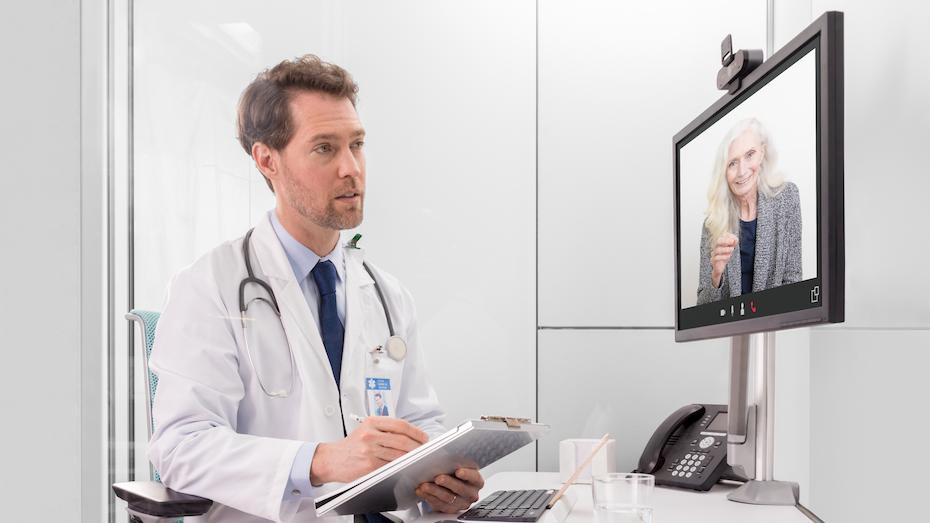Whether you are in a planning phase or about to implement a telemedicine program, either way, you probably be wondering how to conduct high-quality virtual visits or what a virtual visit should be like. Some of you even get anxious about how to prepare your staff or patients to conduct a successful virtual session.
If you have a medical billing service provider like Clinicast, consider half of your work is done here. From scheduling appointments and checking insurance to billing and payment collection, they provide all the necessary support services to the healthcare practitioners. With their support, physicians only need to ensure that their patients benefit from their virtual visits.
Below we have provided some tips and detailed how to leverage technology and conduct a successful virtual visit.
Gearing up:
- Use a fast internet connection:
A fast internet connection is the most important thing for conducting a successful telehealth virtual visit. Of course, the patient is also required to have good internet at their end to have an uninterrupted session. Poor internet connectivity would result in distorted voices and bad video quality.
- Get a high-quality webcam:
The second important thing is a good webcam. Although modern laptops come with a built-in webcam, getting a separate one won’t be a bad idea as it would provide a better video quality. Also, you must maintain good eye contact with the patient to make them comfortable and respond promptly.
Make sure your patient also uses a good-quality webcam. You would also require a clear video to have a proper discussion. To be on the safe side, ask your patients to test their webcams before connecting to the virtual session.
Lastly, your camera should be set up at eye level as this will make it easier for the patient to maintain eye contact with you.
- Use high-quality sound equipment:
While prepping for your online session, ensure you have high-quality sound equipment. Most modern laptops come with a built-in good-quality speaker and microphone. Before attending the virtual appointment, make a test call to your staff or colleague to check if they can hear you well or if you need to get closer to the microphone so others can hear you well. Also, if you have supporting staff on the line, make sure the other person’s audio is clear to them.
If your laptop is older, it would be best to check the sound quality before the call and if it needs to be replaced, then do it asap.
- Set up an office space for virtual visits:
While providing care services virtually is easier, you need to set up a dedicated space where you can conduct online sessions. If you are at the office, it’s much more convenient to reserve a small quiet space for virtual visits. On the contrary, if you are working from home, then a quiet room would be fine as well. Just ensure the lighting and noise level is appropriate for the visit.
Be mindful that the place you select is private as you will directly interact with the patients and require their personal information.
- Set your Notifications:
Typically, virtual visit platforms have a notification system where the physicians are notified when a patient is ready for the online consultation. At eVisit, physicians choose how they want to set up their notification settings, for instance, SMS, email, text or any other app. If you are a physician beginning to provide online consultation, then make sure you choose the correct notification setting so that you instantly get notified when a patient is waiting to see you.
2) Prepping for the online visit:
- Plug in your device:
First, check your device’s camera, microphone and speakers are working fine, just as we said earlier, then plug in your device to a power source. Doing so is extremely important as having your battery dead in the middle of a session is the last thing that you would want.
- Try using a wired connection:
While it’s fine to conduct a virtual visit over a Wifi, using a wired connection would be great as it is likely to disconnect during the session.
- Close unnecessary tabs:
We all have the habit of opening multiple tabs simultaneously. It’s fine to do that while you are not connected to an online meeting; however, when you are making a virtual visit, doing so will lead to bad video and voice quality. Therefore, it is better to close all the unnecessary tabs before the visit.
- Dress Appropriately:
Even though it’s a virtual visit, you must dress appropriately as you will be seeing a patient. Appearing in formal attire will reinforce that the online session is just as professional as making a face-to-face interaction.
3) During the Visit:
- Share your screen when needed:
During the session, you should be ready to share your screen whenever required. Therefore, make sure you have opened only the important tabs for references.
- Stay in touch with the support team:
Since it will be a virtual session, you can expect any kind of technical issue to appear. Unless you have a healthcare tech service provider like Clinicast managing your support tasks, it is advised that you keep the support team’s contact information on hand.
- Keep the patient’s history with you during the visit:
Keeping a patient’s history on hand during the session would appear as a professional gesture. Also, knowing a patient’s history will help you deal with them more effectively.
Conclusion:
It’s obvious that we don’t recall the Covid time in a good way. Still, we must acknowledge that it paved the way for considerable adoption of online education and treatments that we would have never had otherwise.
If you plan to implement virtual visits for your healthcare services, you must follow the above-listed tips in order to succeed. Also, make sure you train your supporting staff for this massive change and provide them with the necessary equipment.
Lastly, be mindful that a virtual visit is only successful if you as a physician successfully engage and satisfy your patients.



